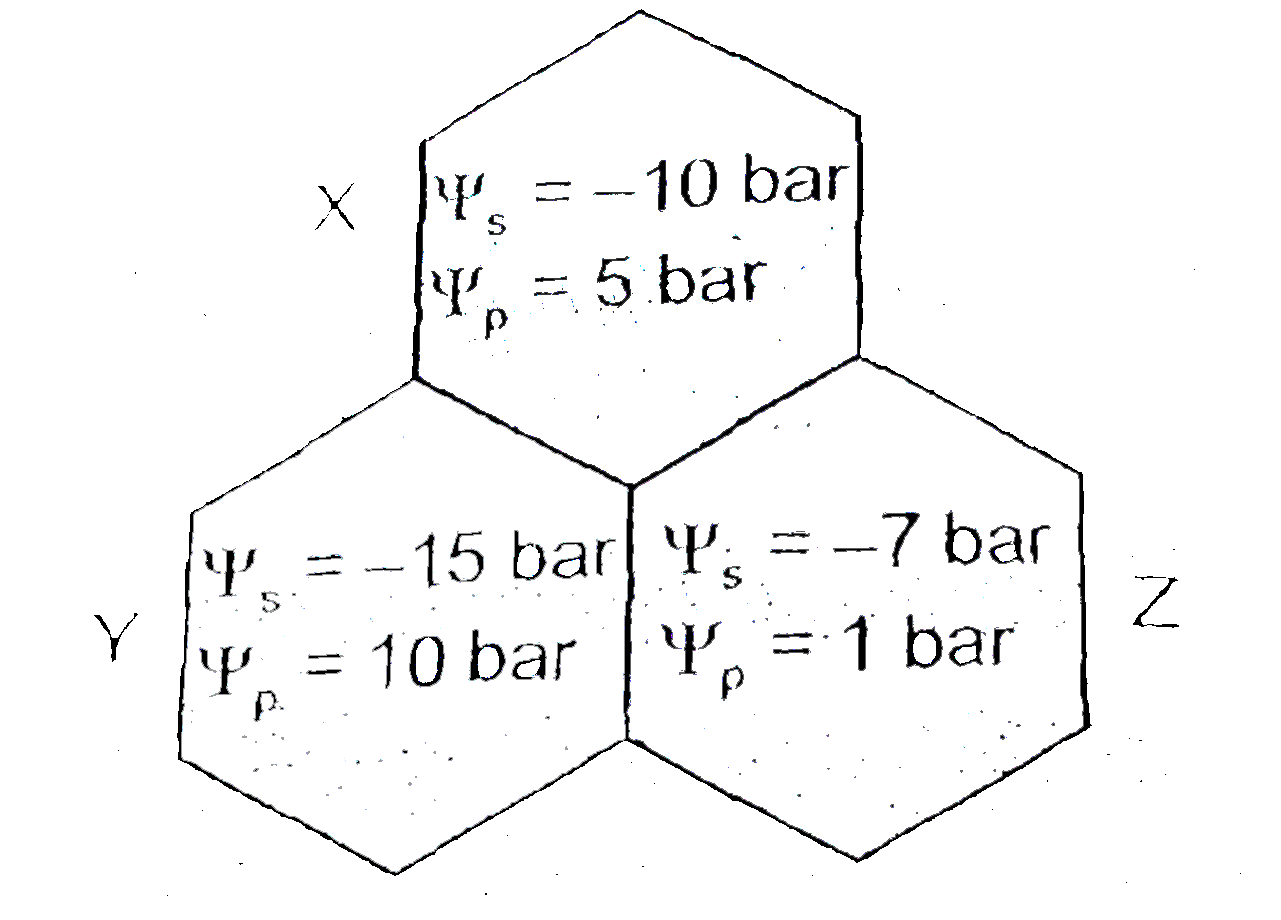Symplastic movement of water in intracellular space of cell is aided by
Cyclosis
Golgi body
Plasmodesmata
Cell wall
The correct Answer is:A
To answer the question regarding what aids the symplastic movement of water in the intracellular space of a cell, we can break down the explanation step by step:
1. Understanding Symplastic Movement:
- Symplastic movement refers to the movement of water through the cytoplasm of living cells. This pathway involves the interconnected cytoplasm of adjacent cells.
2. Role of Protoplasts:
- The protoplasts are the living components of a plant cell, which include the cell membrane and the cytoplasm. In the symplastic pathway, water moves through the protoplasts of neighboring cells.
3. Cytoplasmic Streaming (Cyclosis):
- The movement of water through the cytoplasm is facilitated by a process known as cytoplasmic streaming, also referred to as cyclosis. This process involves the movement of the cytoplasm within the cell, which helps in the distribution of nutrients and water.
4. Plasmodesmata:
- The cells are connected by structures called plasmodesmata, which are microscopic channels that traverse the cell walls. These channels allow for the direct transfer of water and solutes between adjacent cells, further aiding the symplastic movement.
5. Other Options:
- The Golgi body is an organelle involved in processing and packaging proteins and lipids, but it does not directly aid in the movement of water.
- The cell wall provides structural support but does not facilitate the movement of water in the symplastic pathway.
- The plasma membrane is crucial for maintaining the integrity of the cell but is not the main facilitator of symplastic movement.
6. Conclusion:
- Therefore, the correct answer to the question is that the symplastic movement of water in the intracellular space of a cell is primarily aided by cyclosis (cytoplasmic streaming) and the presence of plasmodesmata.
- Symplastic movement refers to the movement of water through the cytoplasm of living cells. This pathway involves the interconnected cytoplasm of adjacent cells.
- The protoplasts are the living components of a plant cell, which include the cell membrane and the cytoplasm. In the symplastic pathway, water moves through the protoplasts of neighboring cells.
- The movement of water through the cytoplasm is facilitated by a process known as cytoplasmic streaming, also referred to as cyclosis. This process involves the movement of the cytoplasm within the cell, which helps in the distribution of nutrients and water.
- The cells are connected by structures called plasmodesmata, which are microscopic channels that traverse the cell walls. These channels allow for the direct transfer of water and solutes between adjacent cells, further aiding the symplastic movement.
- The Golgi body is an organelle involved in processing and packaging proteins and lipids, but it does not directly aid in the movement of water.
- The cell wall provides structural support but does not facilitate the movement of water in the symplastic pathway.
- The plasma membrane is crucial for maintaining the integrity of the cell but is not the main facilitator of symplastic movement.
- Therefore, the correct answer to the question is that the symplastic movement of water in the intracellular space of a cell is primarily aided by cyclosis (cytoplasmic streaming) and the presence of plasmodesmata.
Similar Questions
Knowledge Check
- Question 1 - Select One
Net movement of water is from
ALow DPD to high DPDBHigh DPD to low DPDCDPD gradient plays no roleDNone of the above - Question 2 - Select One
The movement of water is along
ATurgor gradientBDPD gradientCDiffusion gardientDOsmotic gradient - Question 3 - Select One
Upward movement of water in plants is called
ASuckingBAscent of sapCTranslocationDNone of these
If movement of water occurs through intercellular spaces then it is the :
View SolutionSymplast pathway of water in plants is not related to
View SolutionSymplast pathway of water in plants is not related to
View SolutionThe movement of water in the xylem relies upon the
View Solution(a) Movement from one part of the cell to the other part. (b) Movement from cell to cell. (c) Movement over long distance. (d) Movement from intercellular spaces of leaf to outside. Which statement correct regarding diffusion ?
View Solution


